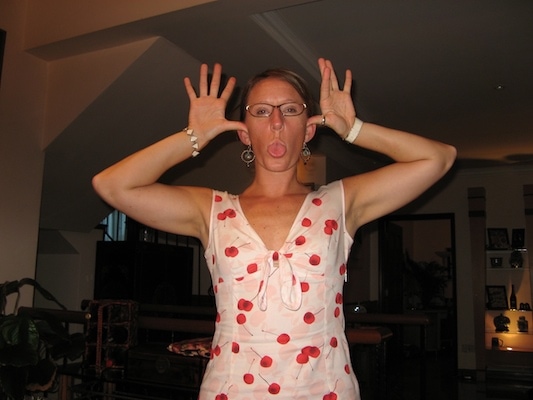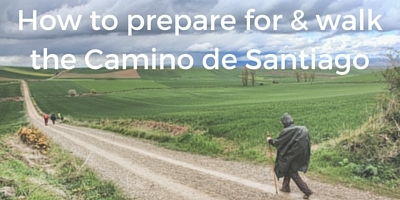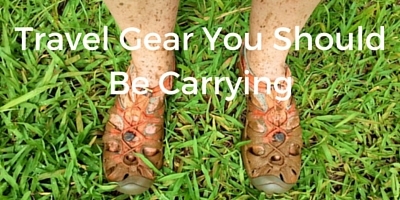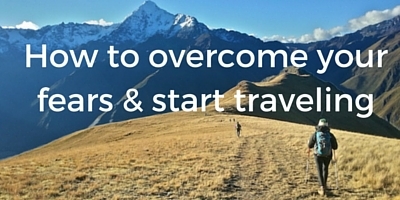Sometimes I feel like I speak in mime. The universal travel language doesn’t contain words; it contains gestures. When I take a step back and see how I’ve traveled to 50+ countries without ever knowing another language – I am amazed at how far a few gestures can get you.
I’ve compiled a list of the most important and universal ones that I find myself using all the time. Theses non-verbal gestures are known all over the world and will keep you communicating with locals as if you were old friends.
Thumbs Up
This gesture isn’t just for Arthur Fonzerelli – it is used all over the world
Action: put your hand in a fist and stick your thumb out straight so that it’s pointing upward….Heeyyyyyyyy.
Meaning: I’m good, it’s good, I like it, yes, great, I am ok
Generally it’s positive and goes along with raised eyebrows and a toothy smile.
Check Please!
I’ve eaten all over the world and one thing holds true if you want the check/bill, there’s only one gesture that is known throughout the world. I’m a bit embarrassed to say that even though I lived in Vietnam for a year I never did learn the word for bill or check – I simply used this gesture. Lazy…yes, but effective.
Action: Hold one hand as if it’s a notepad and the other hand should be miming writing on the notepad/hand. Hold it up high so the waiter can see it and make eye contact. You’ll have your bill in no time!
Meaning: May I have my bill please?, I’d like to pay now.
How Much?
I always recommend having a calculator within reach when you travel. It’s used constantly to bargain at markets or simply understand the price of something. But before you start to haggle with the calculator, first you have to find out a starting point.
Action: Hold your hand out with your palm facing up. Bring all of your fingers together so the tips are touching. Then with your fingers pointing upwards, rub your thumb and first two fingers together.
Meaning: How much does ‘X’cost?, What’s the price?
Sleep
We had a lot of trouble finding hotels and hostels during the Mongol Rally thanks to language barriers. We would get a blank stare if we asked where a hotel was, but when we used body language to try to find a hotel – we always got a smile and an answer. Granted – I can’t say that we always found the said hotel, but we tried.
Action: Put your hands with your palms together in the prayer position and then put them on the side of your head and act as if you are laying on them like a pillow. It is most effective when you close your eyes too!
Meaning: I want to sleep., Where is s hotel?, I’m tired, I need to find a bed
Smile
This is by far the easiest and most understood gesture in the world. A smile speaks words and is probably the easiest way to get people to open up to you.
Action: no explanation necessary!
Meaning: – I like you, Welcome!, I’m happy to be here.
With these frequently used gestures, you’ll be able to communicate around the world!
What are some of your most used nonverbal when you travel? Have they worked or do you get blank stares?










By 50+ and on the Run November 8, 2011 - 8:34 am
excitedly fake clapping indicates that you are REALLY pleased and excited–usually brings a smile.
I was warned to avoid the OK sign, as in lots of places it is vulgar–oops!
By Tonito November 8, 2011 - 10:43 am
LOL Nice post! However I have to warn you, if you are ever in Libya, the “Check Please” sign doesn’t always work as I discovered to my amusement. I did the sign a couple of second later the waiter pitched up with a pen… (and no bill!)
By Keith November 9, 2011 - 7:47 am
Good post and so true.
I don’t usually carry a calculator but try to always have a pen and paper with me. Writing the numbers works and have drawn pictures of Trains and Busses.
By Debbie Beardsley November 9, 2011 - 4:00 pm
Very humorous! I have to admit I have used all of these much more than I should. Hand signals work great 🙂
By Mark H November 10, 2011 - 6:42 pm
Couldn’t agree more with the SMILE being the most important one. It often breaks the ice with others and makes people feel happier and relaxed. I’ve found you need to be a little careful with some finger signals as they can have different meanings in other locations (especially the cultures well removed from ours). Nice idea for an article.
By JD November 10, 2011 - 8:12 pm
Great Post, I always find myself make hand gestures and sound effects while traveling.
Love the last pic, it means “where’s the Moose?” right…. 😉
By Gerard ~ GQ trippin November 11, 2011 - 1:00 pm
I wonder if the check please notepad gesture will be replaced by a credit card swiping gesture in the future?
By Anil November 20, 2011 - 10:10 am
hahaha, I use the ‘check’ one all the time! Universal… 🙂
By Kelsey November 21, 2011 - 2:53 pm
This is such a great idea for a post! Most folks have no clue how important non-verbal communication is when you’re traveling.
By Kj November 22, 2011 - 3:38 pm
Love it! Have used all of these.
I also love the gestures you can ‘adopt’ when in a new country – Italy is a riot for big hand/arm gestures! Not entirely sure what they all mean, but used liberally they not only feel wonderful but get you lots of chat/smiles in return 🙂
By Anis Salvesen November 25, 2011 - 3:28 pm
The smile is definitely my favorite non-verbal communication tool. So far it’s never failed (where’s some wood on which I can knock?).
I also find myself doing a slight head bow when I thank people, and that seems to get the message across. The only time I really remember facing a challenge as far as gestures was when I was in India and a head movement that was a sideways motion meant ‘Yes.’ Even though I knew it was an affirmative, I had to keep reminding myself every time that the person nodding their head was not disagreeing.
By California traveler December 30, 2011 - 12:33 pm
Great post. I have found many gestures to be necessary even in my own country, since I visit a lot of ethnic markets and meet a lot of shopkeepers who don’t speak English (or pretend not to?). To ask the price of things, very often I will hold it up or look at them, and raise my eyebrows in a question, maybe tilt the head slightly. That has always worked. I also use the head bow often as it seems to be so appreciated.